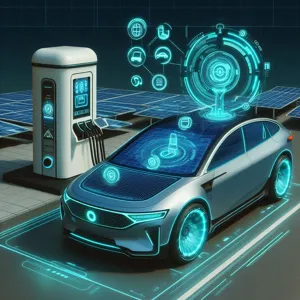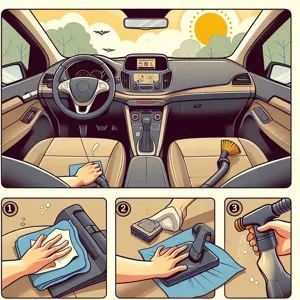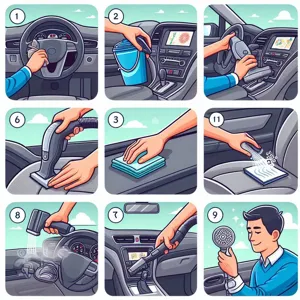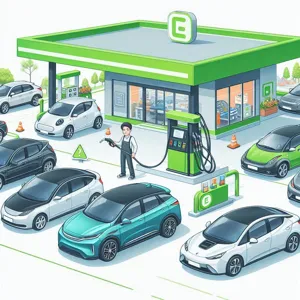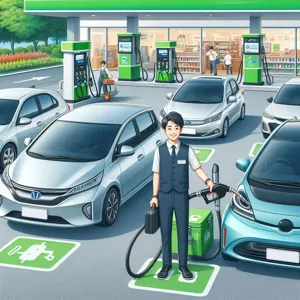In a world where speed meets sophistication, luxury automobiles stand as a testament to engineering prowess and opulent design.
For car enthusiasts and collectors alike, the allure of the most expensive cars in the world transcends mere transportation; these vehicles represent the pinnacle of status, craftsmanship, and innovation. From the stunning curves of a Bugatti Chiron to the futuristic lines of a Pagani Zonda, each car on this exclusive list tells a unique story of ambition and artistry. As we delve into this blog post, prepare to embark on a thrilling journey through the rarest and most luxurious vehicles ever created, exploring what sets them apart, the elite brands behind them, and the staggering price tags that come with such unparalleled prestige. Buckle up, as we take you on a ride through a world where luxury knows no bounds!
1. Introduction to Luxury Cars: A Brief Overview

Luxury cars are more than just vehicles; they are symbols of status, craftsmanship, and cutting-edge technology. These magnificent machines are meticulously designed to offer an unparalleled driving experience, combining performance, comfort, and aesthetics in ways that elevate them above standard automobiles. From opulent interiors adorned with the finest leathers and exotic wood trims to innovative features that redefine convenience and safety, luxury cars represent the pinnacle of automotive engineering.
The allure of luxury cars lies not only in their performance but also in the prestige associated with them. Owning a luxury car often signifies a lifestyle of success and sophistication, appealing to those who seek to make a statement on the road. Brands like Rolls-Royce, Ferrari, and Lamborghini have become synonymous with opulence and exclusivity, each offering unique models that cater to the desires of affluent enthusiasts.
As we delve deeper into the world of luxury automobiles, we will explore the most expensive cars on the market, highlighting their extraordinary features, innovative technologies, and the craftsmanship that goes into creating these automotive masterpieces. Join us on this journey as we navigate through the lavish realm of luxury cars, where every detail is meticulously crafted, and every ride is an experience to remember.
2. What Defines an Expensive Car?
When delving into the realm of luxury automobiles, it’s essential to understand what truly defines an expensive car. While the price tag is the most apparent factor, the concept of luxury extends far beyond mere digits; it encompasses a blend of craftsmanship, exclusivity, performance, and innovation.
First and foremost, the craftsmanship of an expensive car is unparalleled. Each vehicle is often hand-built by skilled artisans who pour their expertise and passion into every detail. From the meticulously stitched leather upholstery to the flawless paint finishes, the attention to detail is designed to create a sensory experience that transcends the typical driving experience. Brands like Rolls-Royce and Bugatti are synonymous with artisanal craftsmanship, where every element, no matter how small, is treated as a work of art.
Exclusivity also plays a pivotal role in defining luxury. Many of the world’s most expensive cars are produced in limited quantities, making them rare treasures coveted by collectors and enthusiasts alike. For instance, the Koenigsegg Jesko is not just about its staggering price; its production is limited to just a handful of units, creating an aura of desirability that draws in those with a taste for the extraordinary. This exclusivity often leads to a sense of belonging to an elite club, where ownership signifies status and wealth.
Performance is another critical aspect that distinguishes an expensive car from its more affordable counterparts. High-end vehicles are engineered for peak performance, boasting powerful engines, advanced aerodynamics, and cutting-edge technology that enable them to achieve astonishing speeds and unparalleled handling. Brands such as Lamborghini and Ferrari push the boundaries of automotive engineering, ensuring that each model offers a thrilling driving experience that is not just about getting from point A to B, but about embracing the journey itself.
Lastly, innovation is a hallmark of luxury vehicles. Manufacturers continually integrate the latest technology to enhance comfort, safety, and driving dynamics. Features like adaptive cruise control, advanced infotainment systems, and even autonomous driving capabilities reflect a commitment to staying at the forefront of automotive innovation. As a result, luxury cars not only deliver on performance but also provide a glimpse into the future of transportation.
In summary, an expensive car is defined by much more than its price; it is a harmonious blend of exquisite craftsmanship, exclusivity, unparalleled performance, and cutting-edge innovation. Together, these elements create a driving experience that is truly the pinnacle of luxury, captivating enthusiasts and collectors around the globe.
3. The Top Luxury Car Brands

When it comes to the world of luxury cars, a select few brands reign supreme, each synonymous with opulence, precision engineering, and cutting-edge technology. These brands not only set the standard for automotive excellence but also embody a lifestyle that is as much about status as it is about performance. Here, we delve into the top luxury car brands that have captured the hearts and wallets of the elite.
**1. Rolls-Royce:** Renowned for its unparalleled attention to detail and bespoke craftsmanship, Rolls-Royce stands as the epitome of luxury. Each vehicle is a masterpiece, handcrafted to meet the exact specifications of its owner. The iconic Spirit of Ecstasy hood ornament signals not just prestige but a commitment to excellence that is evident in every curve and stitch.
**2. Bentley:** Merging classic British elegance with modern performance, Bentley is a brand that appeals to those who appreciate both tradition and innovation. With its powerful engines and sumptuous interiors, Bentley cars offer a thrilling driving experience wrapped in an aura of sophistication. Models like the Continental GT and the Mulsanne are not just cars; they are statements of wealth and taste.
**3. Ferrari:** For many, Ferrari is more than just a car; it’s an experience. Known for their striking designs and formidable performance on the track, Ferraris are the ultimate expression of speed and luxury. The roar of a Ferrari engine is music to the ears of car enthusiasts, while the unmistakable prancing horse logo represents the pinnacle of automotive aspiration.
**4. Lamborghini:** If luxury and audacity had a child, it would undoubtedly be Lamborghini. With their aggressive lines and eye-catching designs, Lamborghini cars are built to turn heads. Models like the Aventador and Huracán are not just about luxury; they are about making a statement, offering blistering performance that rivals the best in the industry.
**5. Aston Martin:** Known for its association with British elegance and James Bond, Aston Martin combines sophistication with exhilarating performance. With a focus on fine craftsmanship and innovative technology, each Aston Martin is a blend of luxury and sportiness, creating a driving experience that is both thrilling and refined.
**6. Bugatti:** When it comes to sheer performance, Bugatti stands alone at the top of the hierarchy. With models like the Chiron, Bugatti has redefined the limits of speed and luxury. These hypercars are not just about going fast; they are engineering marvels that push the boundaries of what is possible in the automotive world, making them a coveted choice for the wealthiest collectors.
In the realm of luxury cars, these brands are not merely manufacturers; they are curators of a lifestyle that celebrates the fusion of art, technology, and performance. Investing in a vehicle from any of these top luxury brands is not just a purchase; it’s an entry into an exclusive world where quality and prestige reign supreme.
4. Spotlight on Bugatti: The Ultimate Performance Machines
When it comes to the epitome of luxury and performance in the automotive world, Bugatti stands unparalleled. Founded in 1909 by Italian-born French automobile designer Ettore Bugatti, the brand has continually pushed the boundaries of speed, engineering, and design. With a legacy steeped in racing success and innovative engineering, Bugatti cars are not just vehicles; they are masterpieces that embody the spirit of automotive excellence.
At the heart of Bugatti’s allure is its commitment to creating the ultimate performance machines. Take, for instance, the Bugatti Veyron, which made headlines when it became the fastest production car in the world. With an astonishing 1,001 horsepower engine and a top speed exceeding 250 miles per hour, the Veyron redefined what a supercar could achieve. Its sleek, aerodynamic design and luxurious interior epitomize a blend of functionality and elegance, ensuring that every ride feels like a thrilling yet opulent experience.
Following in the Veyron’s footsteps is the Bugatti Chiron, which further elevates the brand’s reputation. With a staggering 1,479 horsepower and a top speed electronically limited to 261 miles per hour, the Chiron offers a symphony of power and precision. Its quad-turbocharged W16 engine delivers an exhilarating acceleration that leaves even seasoned car enthusiasts breathless. Each Chiron is meticulously crafted, featuring an interior adorned with the finest materials, from supple leather to intricate carbon fiber, providing an unparalleled level of comfort and luxury.
But Bugatti isn’t just about raw power; it’s also about exclusivity. Each model is produced in limited quantities, often with bespoke options tailored to the owner’s preferences, allowing for a unique expression of personal style. This exclusivity, combined with the brand’s rich history and commitment to performance, commands a price tag that often surpasses several million dollars.
In a world where speed meets sophistication, Bugatti remains a beacon of what it means to drive the most expensive cars on the planet. For those fortunate enough to own one, it’s not just about transportation; it’s a lifestyle—an embodiment of luxury, performance, and the relentless pursuit of automotive perfection.
5. Rolls-Royce: Craftsmanship and Heritage

When it comes to the world of luxury automobiles, few names evoke the same level of reverence as Rolls-Royce. Each vehicle that rolls off the production line is not merely a mode of transportation; it’s a masterpiece of craftsmanship that embodies a rich heritage steeped in tradition and excellence. Founded in 1904, Rolls-Royce has dedicated itself to creating cars that are as much about the experience as they are about the engineering.
The hallmark of a Rolls-Royce is its meticulous attention to detail. Each car is handcrafted by skilled artisans, ensuring that no two vehicles are exactly alike. From the sumptuous leather interiors to the hand-polished wood veneers, every element is carefully selected and crafted to perfection. The iconic Spirit of Ecstasy hood ornament symbolizes not just luxury, but also the brand’s unwavering commitment to quality and sophistication.
Beyond craftsmanship, Rolls-Royce vehicles are steeped in a legacy that transcends time. The brand has long been a favorite among royalty, celebrities, and discerning collectors, becoming synonymous with opulence and prestige. Owning a Rolls-Royce is not merely about possessing a car; it’s about joining an elite club that appreciates the finer things in life.
The technological innovations in modern Rolls-Royce models complement their classic elegance. Advanced engineering ensures that each vehicle delivers an unparalleled driving experience, with powerful engines that provide a smooth, silent ride. Features such as bespoke audio systems, cutting-edge navigation, and climate control technology further enhance the luxury experience, creating an oasis of comfort and sophistication within the vehicle.
In a world where mass production often overshadows individuality, Rolls-Royce stands as a beacon of craftsmanship and heritage. As you explore the most expensive cars in the world, the allure of a Rolls-Royce remains undeniable—a perfect blend of tradition, artistry, and innovation that continues to define the pinnacle of luxury in automotive excellence.
6. The Allure of Pagani: Art on Wheels
When it comes to the intersection of automotive engineering and artistic expression, few names resonate as profoundly as Pagani. Founded by Horacio Pagani, this boutique manufacturer from Modena, Italy, has taken supercar design to dizzying heights, crafting vehicles that are not merely modes of transportation but rather rolling masterpieces. Each Pagani model is a testament to the brand’s unwavering commitment to perfection, blending advanced technology with an artistic vision that is both breathtaking and awe-inspiring.
The allure of Pagani lies in its meticulous attention to detail. Every curve of the body, every stitch of the interior leather, and every component of the engine is thoughtfully designed and meticulously implemented. The use of innovative materials like carbon fiber and titanium not only enhances performance but also contributes to the car’s stunning aesthetic. Driving a Pagani is akin to experiencing a symphony of speed, power, and artistry, as the vehicle glides effortlessly on the road, leaving a trail of sheer admiration in its wake.
Moreover, Pagani’s limited production runs ensure that each car remains exclusive, making ownership a badge of honor among automotive enthusiasts. Models like the Zonda and Huayra have become iconic, celebrated not just for their mind-boggling performance but also for their unique character and soul. Every Pagani tells a story—one of passion, creativity, and a relentless pursuit of automotive excellence.
For those fortunate enough to command the keys to a Pagani, the experience transcends mere driving; it becomes an intimate connection with a work of art. As the engine roars to life, and the driver takes to the open road, they are not just piloting a car—they are engaging with a legacy of innovation and a celebration of what it means to push the boundaries of luxury and performance. In the world of supercars, Pagani stands uniquely positioned, embodying the essence of art on wheels, captivating the hearts of collectors and enthusiasts alike.
7. Lamborghini: The Epitome of Sporty Luxury

When it comes to the world of high-performance automobiles, few names evoke as much passion and prestige as Lamborghini. Renowned for its striking designs and blistering speed, Lamborghini has firmly established itself as the epitome of sporty luxury. The brand’s ethos is woven into the very fabric of its vehicles, where cutting-edge engineering meets breathtaking aesthetics, resulting in cars that are not just modes of transportation but symbols of status and sophistication.
At the heart of every Lamborghini lies a powerful engine, often a roaring V10 or V12, capable of propelling these magnificent machines from 0 to 60 mph in mere seconds. Take the Aventador, for instance; with its aggressive lines and aerodynamic profile, this supercar doesn’t just look fast—it is fast. The sound of its engine is a symphony for car enthusiasts, a deep growl that resonates with the thrill of the open road.
But it’s not just about speed. The interiors of Lamborghini vehicles are equally impressive, crafted with the finest materials and adorned with state-of-the-art technology. Plush leather seats hug the driver and passengers, while an intuitive infotainment system keeps everyone connected, ensuring that luxury is never compromised, even at high speeds.
Moreover, Lamborghini’s commitment to innovation shines through in models like the Sián, the brand’s first hybrid supercar. This marvel not only showcases Lamborghini’s prowess in creating powerful machines but also highlights its forward-thinking approach to sustainability without sacrificing performance.
Owning a Lamborghini is more than just possessing a car; it’s an experience that embodies a lifestyle of exclusivity and thrill. From the moment you slip behind the wheel, you are enveloped in a world where every detail is meticulously designed to offer the ultimate in sporty luxury. Whether you’re cruising down a sun-soaked coastal highway or navigating city streets, a Lamborghini ensures that you make a statement wherever you go. In the realm of luxury automobiles, Lamborghini stands unmatched, a true testament to the fusion of speed, style, and sophistication.
8. Koenigsegg: Innovation and Engineering Excellence
Koenigsegg stands as a titan in the automotive world, synonymous with innovation and engineering excellence. Founded in 1994 by Christian von Koenigsegg in Sweden, the brand has consistently pushed the boundaries of what is possible in the realm of hypercars. Each model is a testament to the company’s relentless pursuit of perfection, showcasing cutting-edge technology that often leaves competitors in the dust.
At the heart of Koenigsegg’s philosophy is a commitment to performance. The brand is renowned for its powerful engines, which utilize advanced materials like carbon fiber and lightweight alloys to achieve remarkable power-to-weight ratios. Take, for instance, the Koenigsegg Jesko Absolut, a hypercar designed for speed that boasts an unprecedented 1,600 horsepower. Its aerodynamic design, featuring an active rear spoiler and an innovative air intake system, allows it to slice through the air with minimal drag, making it not only one of the fastest cars but also one of the most visually striking.
But Koenigsegg is not just about raw power; it is also a pioneer in sustainable technology. The company has developed a unique biofuel engine that runs on renewable fuels, marking a significant step towards eco-friendly luxury. This innovative approach underscores the brand’s dedication to responsible engineering, proving that high-performance vehicles can also be environmentally conscious.
Moreover, the attention to detail in Koenigsegg vehicles is unparalleled. Each car is handcrafted, with meticulous attention paid to every component, ensuring that buyers receive not just a vehicle, but a piece of art. From the sumptuous interiors that use only the finest materials to the bespoke customization options available to clients, owning a Koenigsegg is a statement of individuality and prestige.
In the world of luxury automobiles, Koenigsegg has carved out a niche that blends breathtaking performance with avant-garde technology and artistry. For enthusiasts and collectors, these hypercars are not merely modes of transportation—they are the pinnacle of automotive achievement, representing the very best of what engineering and creativity can achieve. As the brand continues to innovate, it is clear that Koenigsegg will remain at the forefront of the luxury car market for years to come.
9. Aston Martin: Luxury Meets Performance
When it comes to the fusion of luxury and performance, few brands can rival Aston Martin. Renowned for its sleek lines and powerful engines, Aston Martin epitomizes what it means to drive a high-end vehicle. From the moment you set eyes on one, you’re immediately drawn in by its stunning design, which marries elegance with an aggressive stance. The signature grille, meticulously crafted bodywork, and meticulously designed interiors create an aura of sophistication that is hard to ignore.
But Aston Martin is not just a pretty face; it’s a powerhouse under the hood. With vehicles like the Vantage and the iconic DB11, the brand delivers a thrilling performance that is as exhilarating as it is refined. The growling roar of the engine coupled with precision handling ensures that every drive is a visceral experience. Whether you’re cruising along coastal highways or navigating winding mountain roads, the seamless blend of speed and control is a testament to the brand’s engineering prowess.
Inside, Aston Martin takes luxury to another level. The interiors are a sanctuary of high-quality materials, featuring sumptuous leather, polished wood, and sleek metal accents, all crafted with meticulous attention to detail. State-of-the-art infotainment systems and customizable options allow drivers to tailor their experience, making every journey not just a drive, but an event.
Aston Martin’s commitment to performance doesn’t compromise its dedication to sustainability either. The brand is increasingly incorporating hybrid technology, ensuring that luxury can coexist with a responsible approach to the environment. This forward-thinking attitude further solidifies Aston Martin’s place not just as a car manufacturer, but as a symbol of prestige and innovation in the automotive world.
In the realm of luxury cars, Aston Martin stands as a beacon of excellence, where each model is a harmonious blend of art and engineering, designed for those who appreciate the finer things in life while still craving the rush of unparalleled speed. Whether you’re a car enthusiast or simply admire the remarkable craftsmanship, the allure of an Aston Martin is undeniable—it’s luxury that truly meets performance.
10. The Role of Limited Editions in Luxury Cars
Limited edition luxury cars represent the pinnacle of automotive exclusivity, embodying not just exceptional engineering but also a tantalizing allure of scarcity. These vehicles, often produced in very small numbers, are crafted with a meticulous attention to detail and a commitment to unparalleled quality. Their rarity transforms them into coveted treasures among collectors and enthusiasts, fueling a fervent desire that often transcends mere ownership.
Manufacturers like Bugatti, Ferrari, and Lamborghini frequently unveil limited editions that showcase groundbreaking technology and distinctive design elements. For instance, the Bugatti La Voiture Noire, a one-of-a-kind marvel, was designed to celebrate the brand’s 110th anniversary, melding breathtaking aesthetics with a heart-pounding 1,479 horsepower. Such models not only push the boundaries of performance but also serve as masterpieces that highlight the carmaker’s heritage and innovation.
The allure of limited editions is further intensified by their often-celebrated backstories and associations with famous personalities or events. These connections can drive up demand and resale values, sometimes skyrocketing beyond initial purchase prices. Imagine owning a Ferrari Monza SP1, a nod to the brand’s rich racing history, or a McLaren Sabre, limited to just 15 units worldwide, each tailored to the buyer’s specifications. It’s not just about the car; it’s about becoming part of a select narrative that intertwines luxury, performance, and exclusivity.
In the world of luxury automobiles, limited editions are more than just cars—they are statements of wealth, prestige, and a passion for the extraordinary. As automotive technology continues to advance, the significance of these exclusive models only grows, making them a desirable investment for those looking to own not just a vehicle, but a piece of automotive history.
11. Features That Justify the Price Tag
When it comes to the world’s most expensive cars, the price tag often leaves onlookers in awe and disbelief. However, a closer examination reveals a treasure trove of features and innovations that justify these staggering sums. These vehicles are more than mere means of transportation; they are masterpieces of engineering and design, meticulously crafted to offer an unparalleled driving experience.
First and foremost, the materials used in luxury cars are nothing short of extraordinary. Carbon fiber, titanium, and aerospace-grade alloys are frequently employed to enhance performance while maintaining an impressive aesthetic appeal. Interior finishes might include hand-stitched leather, rare woods, and even precious metals, ensuring that every inch of the car exudes opulence and exclusivity. The meticulous attention to detail extends to custom options, where buyers can select bespoke color palettes and personalized monograms, transforming each vehicle into a unique work of art.
Performance is another crucial aspect that elevates these cars into a league of their own. Cutting-edge engineering allows these machines to reach breathtaking speeds, often exceeding 200 mph. Advanced aerodynamics, specially tuned suspensions, and high-performance engines—some boasting over 1,000 horsepower—ensure a driving experience that is exhilarating yet refined. Additionally, many of these cars are equipped with state-of-the-art technology, including adaptive cruise control, dynamic traction systems, and advanced infotainment systems that seamlessly integrate with modern lifestyles.
Moreover, the rarity of these luxury vehicles cannot be overlooked. Limited production runs mean that owning such a car is not just about the driving experience; it’s about exclusivity. Many brands produce only a handful of units, creating a sense of desirability and prestige among collectors and enthusiasts alike. This scarcity drives up demand and, consequently, the price tag.
Finally, the heritage and craftsmanship associated with these luxury brands play a significant role in justifying their prices. Established names often have decades, if not centuries, of automotive history, innovation, and a proven track record of excellence. Each car represents a culmination of years of research, development, and a relentless pursuit of perfection.
In essence, the features that justify the price tag of the most expensive cars are a harmonious blend of exceptional materials, unparalleled performance, rarity, and rich heritage. These vehicles transcend mere transportation, offering an experience that is as exhilarating as it is exclusive—truly the pinnacle of luxury for those who can afford it.
12. The Impact of Customization on Luxury Vehicles
Customization has become a hallmark of luxury vehicles, transforming them from mere modes of transportation into personalized masterpieces that reflect the unique tastes and lifestyles of their owners. In the world of high-end automobiles, the ability to tailor every aspect of a car—from the color of the paint to the stitching on the seats—elevates the ownership experience to an unparalleled level.
Luxury car manufacturers understand that their clientele desires not just a vehicle, but a statement of identity. Take, for example, brands like Rolls-Royce and Bentley, where bespoke services allow customers to select from an extensive palette of colors, rare woods, and premium leathers. This level of customization can even extend to unique features like personalized engravings or custom sound systems, ensuring that no two cars are exactly alike.
Moreover, the impact of customization goes beyond aesthetic preferences; it enhances functionality and comfort to meet the specific needs of the owner. Whether it’s a tailored ergonomic seat design for long drives or state-of-the-art technology integration for ultimate connectivity, these bespoke touches create a driving experience that is not only luxurious but also deeply personal.
As a result, the value of luxury vehicles can significantly increase with customization, creating a robust market for one-of-a-kind models that appeal to collectors and enthusiasts alike. The allure of owning a car that is distinctly yours—crafted to reflect your vision and desires—means that customization isn’t just an option; it’s a fundamental aspect of the luxury car experience. Thus, whether you’re cruising down the Champs-Élysées or attending an exclusive gala, your personalized luxury vehicle becomes an extension of yourself, making a bold statement wherever you go.
13. The Future of Luxury Cars: Trends and Innovations
As we glance into the future of luxury cars, it’s clear that the landscape is undergoing a remarkable transformation, driven by advancements in technology and evolving consumer expectations. The traditional notions of opulence and performance are being redefined, making way for an era of sustainability, connectivity, and cutting-edge design.
One of the most significant trends reshaping the luxury car market is the shift towards electrification. With environmental concerns at the forefront of global conversations, luxury automakers are investing heavily in electric and hybrid models that not only reduce emissions but also deliver exhilarating performance. Brands like Porsche and Tesla have already set the stage with their high-performance electric vehicles, and others are following suit, blending sustainability with the high-speed thrills that luxury enthusiasts crave.
Moreover, the integration of advanced technology into luxury vehicles is becoming increasingly sophisticated. Imagine stepping into a car that not only offers unparalleled comfort and exquisite craftsmanship but also adapts to your preferences in real-time. Innovations like artificial intelligence, augmented reality dashboards, and autonomous driving capabilities are making this a reality. These features promise to enhance the driving experience, allowing occupants to enjoy personalized settings, smart navigation, and even entertainment options that anticipate their desires.
Additionally, luxury car manufacturers are embracing innovative materials and production methods to create vehicles that are not only stunning but also sustainable. From vegan leather interiors to lightweight composites, the focus is on reducing the environmental impact without compromising on luxury. This commitment to sustainability is resonating with a new generation of affluent buyers who prioritize ethical consumption alongside style and performance.
As we venture into this new era, the most expensive cars in the world are poised to become symbols of not just prestige and power, but also of responsibility and innovation. The future of luxury cars is bright, offering a blend of heritage and modernity that caters to the discerning tastes of tomorrow’s drivers. With each new model, we are reminded that in the world of luxury automobiles, evolution is not just necessary; it is inevitable.
14. Conclusion: Investing in Luxury Cars
In conclusion, investing in luxury cars is not just about acquiring a mode of transportation; it’s about embracing a lifestyle that embodies elegance, performance, and exclusivity. As we’ve explored throughout this article, the world’s most expensive cars are not merely mechanical marvels; they are masterpieces of engineering and design that reflect the pinnacle of human creativity and craftsmanship.
Acquiring a luxury car offers a unique blend of prestige and pleasure, with each vehicle telling its own story through its heritage and innovation. Whether it’s the aerodynamic curves of a Bugatti, the opulence of a Rolls-Royce, or the cutting-edge technology of a Tesla, each car represents a significant investment that can appreciate over time, depending on market demand and rarity.
However, as with any investment, it’s essential to conduct thorough research and consider your personal preferences and financial goals. The luxury car market can be unpredictable, and while some models may soar in value, others may not yield the same returns. Thus, it’s crucial to invest in a car that resonates with your passion and lifestyle, one that you will cherish and enjoy for years to come.
Ultimately, owning a luxury car is about more than just status; it’s about becoming part of an elite community that shares a passion for excellence. As you navigate the world of high-end automobiles, remember to indulge in the experience, appreciate the artistry, and drive with pride. With the right investment, you will not only own a piece of automotive history but also create unforgettable experiences that will last a lifetime.
15. Your Dream Garage: Curating a Collection of the Finest
Imagine stepping into a space that transcends the ordinary—a sanctuary dedicated to automotive excellence, where each vehicle tells a story of craftsmanship, power, and innovation. Curating your dream garage is not merely about parking expensive cars; it’s about creating a collection that embodies your passion for luxury and performance.
Start with the classics that have stood the test of time, such as the iconic Ferrari 250 GTO, a masterpiece of design and engineering that captures the essence of vintage racing. Its sleek curves and roaring V12 engine make it a must-have for any connoisseur of automotive history. Then, consider adding a modern marvel like the Bugatti Chiron, with its mind-boggling speed and unparalleled luxury features, representing the pinnacle of contemporary engineering.
To truly elevate your collection, think about including limited-edition models like the Lamborghini Sián, a hybrid supercar that marries cutting-edge technology with the brand’s traditional flair for dramatic design. Each car should not only serve as a status symbol but also as a representation of the values and aesthetics you cherish.
Don’t forget to curate the ambiance of your garage itself. Enhance the experience with mood lighting that highlights your cars’ stunning lines, and consider incorporating a lounge area where you can admire your collection in comfort. Adding a few pieces of automotive art or memorabilia can also personalize the space, reflecting your unique journey through the world of luxury automobiles.
Ultimately, your dream garage should be a reflection of your personality and taste, a place where automotive dreams come to life, and each car is a testament to your love for the finer things in life. Whether you envision a sleek modern space or a cozy classic haven, the joy of curating a collection of the finest cars is an adventure that will continue to thrill you for years to come.
As we conclude our journey through the realm of the most expensive cars in the world, it’s clear that these magnificent machines represent more than just modes of transportation; they are status symbols, engineering marvels, and works of art that push the boundaries of innovation and design. From the sleek lines of a Bugatti to the opulent interiors of a Rolls-Royce, each vehicle tells a unique story of craftsmanship and exclusivity. Whether you dream of owning one of these automotive masterpieces or simply admire them from afar, the allure of luxury cars captivates enthusiasts and collectors alike. We hope this exploration has ignited your passion for these extraordinary vehicles and inspired you to appreciate the unparalleled artistry and technology that define the pinnacle of luxury. Until next time, keep dreaming and driving towards your own automotive aspirations!









